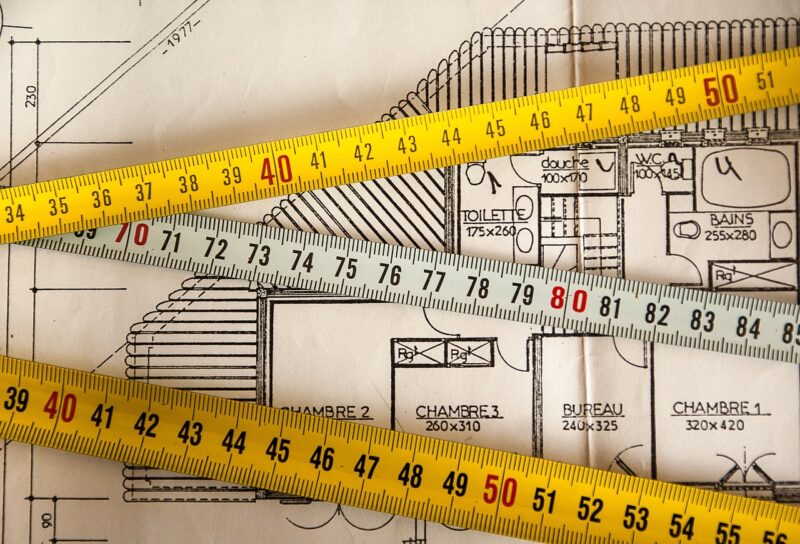How the Metric System Revolutionized Scientific Research and Precision
November 12, 2024

The metric system, a universal decimal-based system of measurement, has fundamentally transformed the way scientific research is conducted and how precision is achieved across various fields. First introduced in France during the late 18th century, the metric system was designed to offer a standardized way to measure almost everything, from length and mass to temperature and volume. This transformation not only paved the way for significant advancements in science but also ensured that the global scientific community could communicate findings with unparalleled clarity and accuracy.
1. The Origins of the Metric System
Before we delve into how the metric system revolutionized scientific research, it’s essential to understand its origins. The metric system was born out of the chaos of varying measurement systems in Europe, which led to confusion and inaccuracies in trade, science, and everyday life. In 1791, the French National Assembly commissioned a system that would be:
- Universal: A system that could be adopted globally.
- Logical: Based on a decimal scale, making it easy to convert measurements.
- Simple: Easy to learn and apply for people of all backgrounds.
The result was a system defined around the meter, kilogram, and liter, with a coherent structure of prefixes (e.g., milli-, centi-, kilo-) that allowed for straightforward conversions. Over time, this system spread across the globe, becoming the foundation for measurement in most countries.
2. Enhancing Scientific Collaboration
One of the most significant contributions of the metric system to scientific research is the enhancement of collaboration. Prior to its widespread adoption, differences in measurement systems were a barrier to communication and understanding among scientists. For instance, one scientist might measure a length in inches while another uses centimeters, leading to inconsistencies in data interpretation and analysis.
With the metric system, scientists across the globe can communicate their findings without the complications associated with fragmented systems. For example:
- Clinical Trial Results: Researchers from different countries can compare the effectiveness of treatments using the same measurement standards, ensuring more accurate assessments.
- International Collaborations: Multinational teams working on projects such as climate change or space exploration benefit from a unified system, allowing for clear data comparisons and collaborative advancements.
- Publishing and Documentation: Scientific literature utilizing the metric system reduces the likelihood of errors in interpretation, making it easier for researchers to replicate studies and build upon each other’s work.
This shared understanding promotes a culture of collaboration that drives progress in scientific discovery.
3. Precision and Accuracy in Measurements
Precision is a cornerstone of scientific research, and the metric system has significantly increased accuracy in measurements. The system is structured around the concept of standard units and decimal-based measurements, which enable patients and researchers to achieve greater precision.
For example:
- Length Measurement: A meter can be divided into millimeters for high precision, beneficial in fields like medicine, engineering, and physics where minute differences can lead to vastly different outcomes.
- Mass Measurement: With grams and milligrams, scientists can measure substances accurately, critical for chemical reactions and pharmaceutical formulations.
- Temperature Scale: Celsius and Kelvin scales used in scientific research provide a straightforward way to measure and report temperature changes, vital in experiments where temperature control is essential.
This higher degree of precision allows for improved experimental outcomes and the ability to detect subtle changes in data, leading to more reliable results.
4. Facilitating Technological Advancements
The metric system has been a driving force behind technological advancements in various fields. Its rational structure promotes innovation through the ease of measurement and compatibility with modern technology. Here are a few areas where the metric system has played a crucial role:
- Engineering and Construction: Engineers can create and analyze complex structures with high precision, ensuring safety and reliability in everything from bridges to skyscrapers.
- Medical Technology: Anesthetics and dosages in medicine follow metric measurements, allowing for precise calibrations that enhance patient safety and treatment efficacy.
- Environmental Science: Metrics like parts per million (ppm) are crucial for studying air quality, pollution levels, and chemical concentrations in water.
In these and many other areas, the consistency of the metric system has proven essential in ensuring that technologies evolve based on standardized and robust measurements.
5. Global Standardization and Trade
Beyond scientific research, the metric system has streamlined global trade by providing a common measurement standard that enhances transparency and consistency across borders. This has multiple benefits:
- Reduced Errors in Trade Agreements: When countries use the same measurement system, misunderstandings related to quantities and specifications decrease significantly, benefiting both exporters and importers.
- Easier Compliance with Regulations: Many international trade regulations require adherence to metric measurements, thus simplifying processes for multinational companies.
- Increased Efficiency: Companies can optimize their supply chains and production speeds, contributing to cost savings and increased profitability.
The result is a more interconnected global economy where scientific and commercial activities operate more smoothly.
6. Conclusion: A Lasting Impact
The metric system has undeniably revolutionized scientific research and precision, transforming how data is measured, communicated, and understood on a global scale. By facilitating collaboration, enhancing accuracy, promoting technological advancements, and streamlining international practices, it has become more than just a system of measurement—it is a foundational element of modern science and society.
As this system continues to evolve with advances in technology, its importance will only grow in the face of new challenges in science and trade. The legacy of the metric system serves as a testament to the power of standardized measurements in fostering innovation, cooperation, and understanding across diverse fields and cultures, paving the way for a more precise and connected future.







